#and demolished the locals for the filth they are
Text
SIMMER DOWN CHILDREN


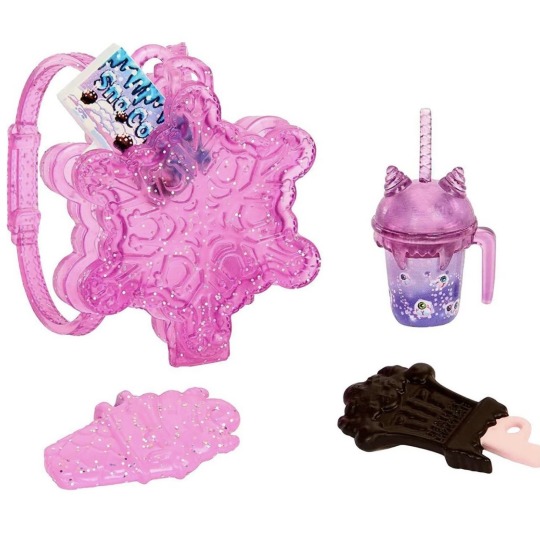



MOTHER HAS ARRIVED!
#abbey bominable#abbey bominable g3#monster high#monster high g3#mh#monster high gen 3#NO ONE TALK TO ME THIS IS THE GREATEST THING IN THE UNIVERSE#queen#an icon truly#went double platinum on her debut#DOMINATING the charts and outselling all the other ghouls#she really did that#she saw y’all g3 haters complaining and said#hold my snowboard#and demolished the locals for the filth they are#y’all can’t touch this snow angel she’s on another LEVEL#an actual Y2K styled character FOR ONCE#like this is GENUINELY Y2K early 00s (2000-2002) vibes#like direct style inspiration#I am the ultimate Abbey Bominable stan and life is rewarding for my efforts at that
80 notes
·
View notes
Text
Dominant Structures: Kiara
Jackson Square

At the intersection of King and James is Jackson Square, it is a indoor shopping mall with around 150 stores, an entertainment complex holding movie theaters, bowling alleys, food courts and a grocery store. In 1972 to indoor shoping mall was built and opened. It was named Lloyd D. Jackson Square after the city mayor. The renovation of the downtown area began with Jackson Square and then continued with the Stelco Tower, Copps Coliseum, and Hamilton Place. Some other applauded the brave move to update the city’s appearance. While some believed the project was poorly thought out because it ignored the city’s history by demolishing old structurea.
Many long-time inhabitants may remember the Jackson Square skating rink and the live Shakespeare plays on the upper grounds/roof with nostalgia. With the exception of the rare event, like the beer festival, the rooftop has remained largely idle since those activities were postponed. Jocelyne Mainville, the leasing manager at Jackson Square for Yale Properties, explains that the plan for the mall's rooftop in 1968 was for it to be a city park or a courtyard. Then the roof top concrete with after math of trying to grow plants and make a green house is now called a depressing space. With its filth and cigarette butts along its perimeter, is disconcerting and even frightening for visitors and locals like me who don't often go downtown, despite the rush of shopping.
When the mall first opened in 1972 many people said it would not last and that it was a waste of building that could be used for other things like housing and such. That is what made me want to pick this mall to talk about since many people have a negative thought about Jackson Square. Therefore giving in 1990 there was a plan to divide Jackson Square into smaller blocks and reinstate the street grid that predated the mall's construction in the 1990s was floated. According to independent planner and one of the owners of Civic Plan consultancy Paul Shaker, this was adopted as a component of a downtown plan for Hamilton but was never put into action.
The owner, who belongs to the Real group of enterprises, is in charge of managing the buildings. The management office is on-site and has an experienced team handling building operations. Over 3.3 million square feet of commercial, industrial, and retail space are being managed by The Real group in Hamilton, Toronto, and Calgary. The company has been in business in Canada for almost 45 years. The 43 stories of the four office buildings in Lloyd D. Jackson Square have more than one million square feet of space. The buildings are home to a number of important tenants, whose workers give Jackson Square a ready-made client base.
0 notes
Note
Hey, it's me again, the anon who requested a pitou and kite fic! Sorry for responding so late! I was thinking prompt #47 '' This place is creepy." Preferably shippy, but I'll leave that up to you! Thank you so so much!
Since this one was more of a scary prompt than an angsty one, this fic is a mixture of romance and horror, and rate T+. Thank you for sending in the last request! I hope you like it! (~˘▾˘)~
--
“This place is creepy,” Kite groused, trying to wipe the black dust off his fingers and onto Neferpitou's navy jacket, “and disgusting.”
Neferpitou purred into the taller man's neck, hands cold as stone underneath Kite's sweater and pressed against his stomach. Kite drew in a long breath as Neferpitou's lips ghosted over his collarbone and up his jaw. When his lover met his eyes, he finally exhaled.
Any other place, and Kite would have drowned in the liquid gold of their eyes.
“Are you listening to me?” Kite deadpanned when a hand went over to his butt and pinched lightly. He barely flinched. “This place is nasty, Pitou; there's filth everywhere.”
Neferpitou gave him a coy smile and went to press their chests together, only to be met with a firm hand to their chest. Neferpitou blinked in confusion. “Huh?”
Kite picked up his dirty finger and showed Neferpitou the remnants of the black dust. “I'm not having relations with you in the basement of a condemned building,” he said pointedly.
Neferpitou bit their cheek before answering. “Why not?”
Kite forgot how dumb his lover was. For an esteemed surgeon, he was surprised the shorter of the two had survived the playground, much less the grueling trenches of medical school. Alas, what would he know? He was just another poor scientist living off scraps academia threw his way.
“... because it's disgusting,” Kite said finally.
Neferpitou seemed to consider his answer. “It's just dust-” they began, but Kite was looming over the shorter of the two before they could get out another word.
Kite huffed and turned to leave, while Neferpitou groaned dramatically. “We can't have sex in your office again; it's too small!”
“We'll just have to hold it together until the apartment is finished,” Kite mumbled back listlessly. Kite was still living with roommates, and Neferpitou still lived with their family, and their shared lovenest wouldn't be ready for their arrival for another month, and motels were out of the question because Kite was poor but prideful, and refused to get a single single room unless they were splitting the costs in half.
Neferpitou knew Kite didn't have half the money since he put most of it on the down payment for their new home, and so they'd found random little places to drag Kite into so they could canoodle for a little bit, and occasionally go at it like bunnies. The first place was Neferpitou's office, but that was an almost-tragedy when Neferpitou's nurses almost walked in. The second place was the attic of Ging Freecss' pawn shop, but once they'd come downstairs, Ging had threatened to kill them both. The third time was in Kite's office, but the space was so small and cramped, a bookshelf almost toppled over and took Neferpitou's life (and Kite's underneath theirs) in the middle of their passionate lovemaking session.
And now they were in a dilapidated building set to be demolished over the next few months, and apparently Neferpitou had found it while driving around town in their brand new Cadillac Kite refused to christen with them because it was new and butt sweat could and would ruin the leather. It wasn't even Kite's car, and he'd been furious for it when Neferpitou had first asked.
Water dripped somewhere in the darkness and Kite shivered. A single bulb was the only bit of illumination in the room, and it was well past closing hours for the local shops. The nearest convenience store was a good four blocks up the road, and Neferpitou had parked their Cadillac next to it. Water dripped again, and Kite grabbed his partner's hand and began dragging them up the stairs, because to hell with late-night canoodling in some abandoned building, they'd just have to suck it up and brave it like all the other touch-starved souls of the world. At least they had Skype calls and dinner every Friday night at the Chinese joint next to Kite's current hovel.
Something skittered close by and Kite willed his fear to stay silent. It was a bloody basement in a bloody building, and they were leaving damn it, karma shouldn't so cruel. They hadn't even gotten to the raunchy part!
“Stay quiet, move slowly,” Neferpitou whispered suddenly. Kite almost jumped, but Neferpitou had somehow gotten a grip around his waist, and steadied him before he could make anymore noise.
Water dripped, and that eerie, skittering noise seemed to come from somewhere much closer this time.
Kite was frozen, his mind blanking to the hellish three months he'd spent stranded on a lonely mountain, in a tiny country close to the arctic, all for the sake of his bloody fucking research, alive now only because Neferpitou had been trekking through that mountain on a leisure trip since they'd lived mere miles away, all the while Kite had believed he'd been transported to Hell after the blizzard had separated him from his research party, and left him stranded in the cold little mountain that felt so, so much like an island.
“Count to three,” Neferpitou whispered softly into his ear.
Kite blinked back tears, but counted to three in his head and then exhaled. He counted to three again, inhaled, counted to three, and exhaled. He repeated the exercise until the fog in his head lifted and he could hear the water dripping again. The skittering had since stopped, but now there was something else.
Kite noticed a pair of rheumy, red eyes watching from some yards away.
“Pitou,” he whispered gravely.
“Slowly,” they warned, releasing Kite's waist. “Get to the landing, and then run.”
Neferpitou didn't turn to face the eyes, but Kite could barely tear his gaze away. The door to the basement had long since broken down, so it was a matter of six or seven more steps until they reached the landing, and after the landing, there was only a couple of yards until they reached the street because the building had lost its front door too, and most of its windows, and it was supposed to be abandoned, but instead-
“Kite,” Neferpitou whispered deadly soft into his ear, “up.”
Kite's feet moved slowly up the stairs, but he couldn't tear his gaze away from the eyes watching their every move. He counted to three and leveled his breaths, blinked a few times, and yet the eyes didn't disappear. He should have been hallucinating, but he wasn't, and so he moved, up, up, and up until he reached the landing.
When one foot was on the landing, something flew across the room. It was only after Neferpitou yelped in pain that Kite broke out of his haze and looked down at the thin, wiry fingers wrapped around Neferpitou's leg.
“Pitou!” Kite barked, and without thinking, he pulled Neferpitou up and dragged the creature's hand up the stairs with them.
Kite saw blue, emaciated fingers in the dim moonlight, too thin to be human. It almost looked like a certain hand he'd encountered on the lonely mountain, a hand belonging to a thin, wiry creature too tall to be considered human, and yet it had offered Kite its hand anyway, and Kite had almost taken it... Almost.
Just then, Neferpitou yanked their own foot straight, and stomped on the creature's hand with all their might.
A screech rang throughout the building, but the creature let go, and it only took those two fateful seconds for Kite to yank on Neferpitou's hand one more time before they reached the landing together, booked it across the abandoned first floor, and jumped out of the rectangular hole where the door used to be.
Its screams followed them well into the streets, and only after they were in the Cadillac and speeding away did Kite finally realize that the creature's eyes hadn't been red after all.
They'd been bleeding.
*
They'd cocooned themselves in Neferpitou's room at the royal estate of the esteemed House of Chimera, the oldest money in the city, and one Kite would have declined entering any other time, but not tonight.
Kite had wrapped a bandage over the red imprint left on Neferpitou's pale white skin. They'd pouted and held a pillow close to their chest while Kite had finished dressing the wound, but as soon as the first aid kit had been put away, Neferpitou had tossed the pillow aside and wrestled Kite into a comfortable spoon.
Kite held Neferpitou's hands to his chest while they grumbled about how they didn't give a damn if their mother walked in to see them canoodling their lover, they were thirty years old, damn it, they'd earned the right to canoodle. Kite could have grumbled along, but he found his thoughts drifting back to those bleeding red eyes and those wiry, thin hands, and the bone-chilling cold he'd felt when he'd thought Neferpitou was going to be snatched away.
“Kite,” Neferpitou whined. “I'm sorry. I'll keep my hands to myself until the apartment is ready,” said the person who was currently feeling up Kite's chest as if their hands were made solely for that reason.
Kite sighed in response, softly squeezing Neferpitou's hands. Then he closed his eyes and laid still.
Soon, Neferpitou's snores drifted through the room, but Kite dwelt. With his eyes closed, and his back to his lover's chest, he dwelt on the rheumy, bleeding eyes and the emaciated hand, and he thought, and he thought, and he thought – and he remembered.
Kite's eyes shot open when he heard a skittering sound move across the wooden floor of Neferpitou's room. He didn't even have to move because slowly, a pair of bleeding red eyes emerged from the shadows, and Kite could only scream while it reached out its hand.
“Rise and shine!”
Kite's eyes shot open. Bright rays of light filtered into the grand room while he took deep, loud breaths.
“... Kite?”
Neferpitou was already up and dressed. Kite blinked back the fatigue and picked himself up. Before he could trudge his way to the bathroom, Neferpitou pulled him into a hug.
They barely reached his chest, and yet, they'd saved him – over and over again.
“I'm fine,” he assured the shorter of the two, but Neferpitou didn't believe him, and merely grumbled into his chest.
“Pitou,” Kite said, “I promise.”
“I'm sorry,” they mumbled into Kite's chest.
Instead of repeating his words, he wrapped both arms around his beloved and hugged them back. The red eyes and wiry hand clawed at the back of his mind, but it didn't matter if they reminded him of the dead bodies he'd discovered lined against each other in the snow on that lonely, as if one day they'd all decided that enough was enough and let the mountain take them together. It didn't matter if those bodies looked alive, with their red eyes and blue hands, those frost-caked lips that looked almost as if they could still speak. It didn't matter if the creature they'd found in that basement was likely a wraith that refused to depart their world. It didn't matter.
Nothing mattered – nothing, but Neferpitou.
“Let's make out,” Neferpitou tried, and instantly, Kite bonked the shorter of the two on the head and made his way to the shower while Neferpitou wailed about their broken skull.
And Kite smiled.
*
18 notes
·
View notes
Text
The Referendum
By Tim Kreider

Recently an editor asked me for an essay about arrested adolescence, joking: “Of course, I thought of you.”
It is worth mentioning that this editor is an old college friend; we’ve driven across the country, been pantsless in several nonsexual contexts, and accidentally hospitalized each other in good fun. He is now a respectable homeowner and family man; I am not. So I couldn’t help but wonder: is there something condescending about this assignment? Does he consider me some sort of amusing and feckless manchild instead of a respected cartoonist whose work is beloved by hundreds and has made me a thousandaire, who’s been in a committed relationship for 15 years with the same cat?
My weird touchiness on this issue — taking offense at someone offering to pay me money for my work — is symptomatic of a more widespread syndrome I call “The Referendum.”
The Referendum is a phenomenon typical of (but not limited to) midlife, whereby people, increasingly aware of the finiteness of their time in the world, the limitations placed on them by their choices so far, and the narrowing options remaining to them, start judging their peers’ differing choices with reactions ranging from envy to contempt. The Referendum can subtly poison formerly close and uncomplicated relationships, creating tensions between the married and the single, the childless and parents, careerists and the stay-at-home. It’s exacerbated by the far greater diversity of options available to us now than a few decades ago, when everyone had to follow the same drill. We’re all anxiously sizing up how everyone else’s decisions have worked out to reassure ourselves that our own are vindicated — that we are, in some sense, winning.
It’s especially conspicuous among friends from youth. Young adulthood is an anomalous time in people’s lives; they’re as unlike themselves as they’re ever going to be, experimenting with substances and sex, ideology and religion, trying on different identities before their personalities immutably set. Some people flirt briefly with being freethinking bohemians before becoming their parents. Friends who seemed pretty much indistinguishable from you in your 20s make different choices about family or career, and after a decade or two these initial differences yield such radically divergent trajectories that when you get together again you can only regard each other’s lives with bemused incomprehension.
I may be exceptionally conscious of the Referendum because my life is so different from most of my cohort’s; at 42 I’ve never been married and don’t want kids. I recently had dinner with some old friends, a couple with two small children, and when I told them about my typical Saturday in New York City — doing the Times crossword, stopping off at a local flea market, maybe biking across the Brooklyn Bridge — they looked at me like I was describing my battles with the fierce and elusive Squid-Men among the moons of Neptune. The obscene wealth of free time at my command must’ve seemed unimaginably exotic to them, since their next thousand Saturdays are already booked.
What they also can’t imagine is having too much time on your hands, being unable to fill the hours, having to just sit and stare at the emptiness at the center of your life. But I’m sure that to them this problem seems as pitiable as morbid obesity would to the victims of famine.
A lot of my married friends take a vicarious interest in my personal life. It’s usually just nosy, prurient fun, but sometimes smacks of the sort of moralism that H.G. Wells called “jealousy with a halo.” Sometimes it seems sort of starved, like audiences in the Great Depression watching musicals about the glitterati. It’s true that my romantic life has produced some humorous anecdotes, but good stories seldom come from happy experiences. Some of my married friends may envy my freedom in an abstract, daydreamy way, misremembering single life as some sort of pornographic smorgasbord, but I doubt many of them would actually choose to trade places with me. Although they may miss the thrill of sexual novelty, absolutely nobody misses dating.
I regard their more conventional domestic lives with the same sort of ambivalence. Like everyone, I’ve seen some marriages in which I would discreetly hang myself within 12 hours, but others have given me cause to envy their intimacy, loyalty, and irreplaceable decades of invested history. [Note to all my married friends: your marriage is one of the latter.] Though one of those friends cautioned me against idealizing: “It’s not as if being married means you’re any less alone.”
Most of my married friends now have children, the rewards of which appear to be exclusively intangible and, like the mysteries of some gnostic sect, incommunicable to outsiders. In fact it seems from the outside as if these people have joined a dubious cult: they claim to be much happier and more fulfilled than ever before, even though they live in conditions of appalling filth and degradation, deprived of the most basic freedoms and dignity, and owe unquestioning obedience to a capricious and demented master.
I have never even idly thought for a single passing second that it might make my life nicer to have a small, rude, incontinent person follow me around screaming and making me buy them stuff for the rest of my life. [Note to friends with children: I am referring to other people’s children, not to yours.] But there are also moments when some part of me wonders whether I am not only missing the biological boat but something I cannot even begin to imagine — an entire dimension of human experience undetectable to my senses, like a flatlander scoffing at the theoretical concept of sky.
But I can only imagine the paralytic terror that must seize my friends with families as they lie awake calculating mortgage payments and college funds and realize that they are locked into their present lives for farther into the future than the mind’s eye can see. Judging from the unanimity with which parents preface any gripe about children with the disclaimer, “Although I would never wish I hadn’t had them and I can’t imagine life without them,” I can’t help but wonder whether they don’t have to repress precisely these thoughts on a daily basis.
Yes: the Referendum gets unattractively self-righteous and judgmental. Quite a lot of what passes itself off as a dialogue about our society consists of people trying to justify their own choices as the only right or natural ones by denouncing others’ as selfish or pathological or wrong. So it’s easy to overlook that hidden beneath all this smug certainty is a poignant insecurity, and the naked 3 A.M. terror of regret.
The problem is, we only get one chance at this, with no do-overs. Life is, in effect, a non-repeatable experiment with no control. In his novel about marriage, “Light Years,” James Salter writes: “For whatever we do, even whatever we do not do prevents us from doing its opposite. Acts demolish their alternatives, that is the paradox.” Watching our peers’ lives is the closest we can come to a glimpse of the parallel universes in which we didn’t ruin that relationship years ago, or got that job we applied for, or got on that plane after all. It’s tempting to read other people’s lives as cautionary fables or repudiations of our own.
A colleague of mine once hosted a visiting cartoonist from Scandinavia who was on a promotional tour. My colleague, who has a university job, a wife and children, was clearly a little wistful about the tour, imagining Brussels, Paris, and London, meeting new fans and colleagues and being taken out for beers every night. The cartoonist, meanwhile, looked forlornly around at his host’s pleasant row house and sighed, almost to himself: “I would like to have such a house.”
One of the hardest things to look at in this life is the lives we didn’t lead, the path not taken, potential left unfulfilled. In stories, those who look back — Lot’s wife, Orpheus and Eurydice — are lost. Looking to the side instead, to gauge how our companions are faring, is a way of glancing at a safer reflection of what we cannot directly bear, like Perseus seeing the Gorgon safely mirrored in his shield.
----------
This article originally appeared in The New York Times on September 17, 2009.
2 notes
·
View notes
Text
SIMON WALTERS says Boris Johnson has been brought down to earth with a bump
Boris Johnson has a unique ability to turn politics on its head. He was mocked for saying he would take the UK out of the EU and pulled it off; he got stuck on a zip wire and he turned it into a public relations triumph; he won a landslide election victory after leaving his wife for a woman 24 years his junior.
Demolishing Labour’s so-called ‘Red Wall’ of seats in the North of England in the 2019 election seemed to be just another example of his ability to defy political gravity.
But he was brought down to earth with a bump early yesterday by the Lib Dems’ thumping victory in the Amersham and Chesham by-election.
It has sparked fears among some Tory MPs that Mr Johnson’s remarkable success in the red wall in the North may have triggered a less welcome political reversal: that the ‘Blue Wall’ of Conservative seats in southern England is in danger of crumbling.
Ministers played down the defeat in Chesham and Amersham, mostly pinning the blame on the HS2 rail link.
Boris Johnson was brought down to earth with a bump early yesterday by the Lib Dems’ thumping victory in the Amersham and Chesham by-election (pictured in Dewsbury on Friday)
Indeed, driving through the Chilterns a few days ago, I noticed several parts of the beautiful landscape gouged out to prepare for the giant diggers and the massive trucks needed to move all the earth, bringing havoc and filth to the area – and wrecking house prices.
But the 8,000 margin of the Lib Dem victory was so big, they could well have beaten the Tories even without HS2.
For while the railway has understandably enraged Conservatives in Amersham and Chesham, the defeat has highlighted a little noticed electoral pattern which has concerned Tory strategists for several years.
Despite Mr Johnson’s stunning election success and the spectacular gains the Tories have made in the North, there are signs the party is doing less well in the South, stretching from the Severn Estuary to the Sussex coast and East Anglia.
According to one study of May’s local council results covering 82 Conservative Parliamentary seats in Gloucestershire, Wiltshire, Oxfordshire, Hampshire, Surrey, West Sussex, East Sussex, Kent, Hertfordshire and Cambridgeshire, the Tories would lose seven seats to the Lib Dems at the next general election. The seven seats are Winchester, Eastleigh, Eastbourne, Chippenham, Cheltenham, Watford and South Cambridgeshire.
The same survey said the Tories would gain Canterbury from Labour, making an overall loss of six in the Blue Wall.
Ministers played down the defeat in Chesham and Amersham (pictured), mostly pinning the blame on the HS2 rail link
If the Lib Dems can repeat the Amersham and Chesham upset, it would be back up to seven. You cannot blame Lib Dem leader Ed Davey for celebrating by taking a hammer to a plastic wall of blue bricks in a triumphant photocall.
But there is no need for No 10 to panic – yet.
The half-dozen or so Blue Wall seats purportedly at risk barely breaks through the grass compared to the towering red wall of 47 Labour seats in England that crumbled at the last election, including many in the North and Midlands.
And for all the humiliation of seeing Amersham and Chesham fall, arguably, Labour’s record low election vote of 622 was even worse for Sir Keir Starmer.
There are no Tory calls for Mr Johnson to resign.
If today’s Mail poll, which indicates that Sir Keir is heading for another Red Wall defeat in the by-election in Batley and Spen on July 1, proves to be true, the Labour leader’s army of Left-wing critics will demand his head.
In my view, that does not mean Mr Johnson can ignore the stirring in the shires.
And for all the humiliation of seeing Amersham and Chesham fall, arguably, Labour’s record low election vote of 622 was even worse for Sir Keir Starmer
A former senior Cabinet minister who spoke to the Mail on condition of anonymity said that the Chesham result marked a ‘seismic’ change in the British landscape that Mr Johnson would ‘ignore at his peril’.
The ex-minister, who has a shires seat, said Tories who defected to the Lib Dems in the by-election had a number of gripes. They had ‘been taken for granted’ by the Conservatives for too long, many voted Remain in the EU referendum and some objected to Mr Johnson’s style. They were offended by the way he was ‘loose with the truth’.
But perhaps the biggest factor, said the ex-minister, was the downfall of Jeremy Corbyn as Labour leader.
Faced with the choice between a Marxist with links to apologists for terrorism and Mr Johnson, even the Prime Minister’s biggest Tory sceptics had no trouble in marking their ‘X’ by Conservative in the voting booth.
With the Corbyn threat gone, voting for another party held little fear for Conservative ‘Boris doubters’, said the former minister.
But perhaps the biggest factor, said the ex-minister, was the downfall of Jeremy Corbyn as Labour leader
The main political casualty of the Tories’ Amersham and Chesham debacle could be Mr Johnson’s pledge to build hundreds of thousands of homes in the South.
It was one of the main complaints in the by-election.
Lib Dem activists told voters on the doorstep in the final days of the campaign: ‘Vote Tory and the bulldozers arrive on Monday.’
I am told that ex-Cabinet minister Theresa Villiers is in charge of a secret Tory Whats- App group made up of 90 mainly southern-based Conservative MPs determined to force the Prime Minister to perform a major U-turn on the housing pledge.
Former deputy prime minister Damian Green, MP for Ashford in Kent, explained to me: ‘We are not going to level up the North by concreting over the South. At the current rate, the Home Counties will soon be a giant patio.’
Isle of Wight Tory MP Bob Seeley warned the Government: ‘Force-feeding communities in the South with endless more housing like foie gras geese is no way forward.
‘If we allow the developers free-for-all to go on, it will be political suicide. As Winston Churchill said, the problem with political suicides is that you live to regret them.’
source https://bbcbreakingnews.com/simon-walters-says-boris-johnson-has-been-brought-down-to-earth-with-a-bump/
0 notes
Text
Gallery: Inside Bangkok's HIDDEN HELL

Inside #Bangkok’s violent secret slums hidden away from tourists where tattooed locals live in drug ravaged hell
A BRIT photographer has uncovered Bangkok's seedy underbelly - where tattooed locals live in drug-ravaged slums.
Sam Gregg set out to find the real people of Bangkok's notorious Klong Toey slum before it gets razed by the government.

Sam Gregg chronicled life for the heavily-tattooed locals - Credit: Sam Gregg

A father poses with his new born child in the Klong Toey slum - Credit: Sam Gregg

Many locals have prison tattoos - Credit: Sam Gregg
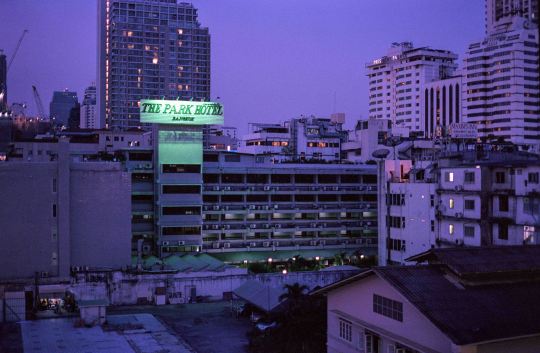
The slum is set to be demolished in 2022 - Credit: Sam Gregg

Yap is a former inmate of Bang Kwang - one of Thailand's most notorious prisons - Credit: Sam Gregg

He was given 20 years for dealing meth - Credit: Sam Gregg

He says his tattoos are a memento of his time behind bars - Credit: Sam Gregg
His gritty pictures show kids playing in filth and heavily tattooed ex-cons smoking under neon lights.
The pictures - shot largely in 2015 - also show sex workers posing in red-light districts and creepy abandoned buildings.
The Neon Dreams series focuses on how people from the poorer northeast of Thailand come to Bangkok allured by the bright neon lights of the city.
It was done to capture what will be lost when the area is gentrified in 2022.

The area is riddled with crime and violence - Credit: Sam Gregg

Sex workers pose in the world-famous slum - Credit: Sam Gregg

Gangsters run the area - Credit: Sam Gregg

The photos were largely shot in 2015 - Credit: Sam Gregg

Many locals are forced into sex work by the grinding poverty - Credit: Sam Gregg

Several of the residents come from the impoverished North East - Credit: Sam Gregg

Tattoos are done in seedy back alleys - Credit: Sam Gregg

Many of the local homeless sleep with knives - Credit: Sam Gregg

The area has been neglected for decades - Credit: Sam Gregg

Kids in the area don't have many prospects - Credit: Sam Gregg

Even the monks have their vices - Credit: Sam Gregg
–
You can follow BangkokJack on Instagram, Twitter & Reddit. Or join the free mailing list (top right)
Please help us continue to bring the REAL NEWS - PayPal
Read the full article
0 notes
Text
How New York City Found Clean Water
https://sciencespies.com/history/how-new-york-city-found-clean-water/
How New York City Found Clean Water
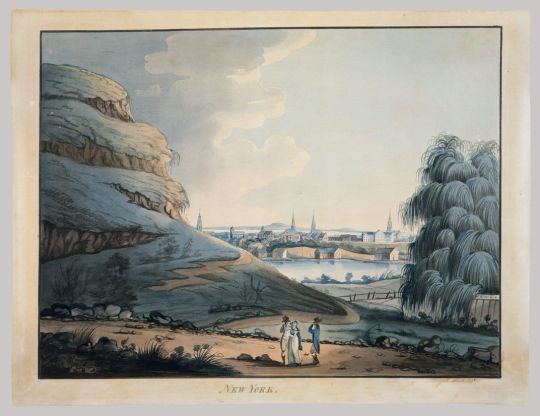
Centuries before New York City sprawled into a skyscraping, five-borough metropolis, the island of Manhattan was a swampy woodland. Ponds and creeks flowed around hills and between trees, sustaining nomadic Native Americans and wildlife. But after the Dutch established a colony in 1624, water shortages and pollution began threatening the island’s natural supply, sparking a crisis that would challenge the livability of Manhattan for 200 years.
Water, Water Everywhere, and Not a Drop to Drink
The town of New Amsterdam, Manhattan’s original colonial settlement, was built on the swampiest part of the island: its southern shore. The closest fresh water sources were underground, but none of it was very fresh. Salt waters surrounding the island brined New Amsterdam’s natural aquifers and springs. A defensive wall built in 1653 cut the colony off from better water to the north. The Dutch dug shallow wells into the available brackish water, and built cisterns to collect rain, but neither source was enough to satisfy the colony’s needs: brewing warm beer, feeding goats and pigs, cooking, firefighting and manufacturing. The water could rarely be used for drinking, according to historian Gerard Koeppel, author of Water for Gotham. “It was loaded with all kinds of particulate matter that made the water unsatisfying as a drinking experience,” he says.
By 1664, New Amsterdam’s limited, salty supply of water, along with a shoddy wooden fort, left the Dutch dehydrated and virtually defenseless, allowing the English to take over without a fight and rename the land New York.
The English maintained many of the colony’s existing customs, particularly its sanitation methods, or lack thereof. From the rowdy seaport to the renovated fort, the colonists ran amok in noxious habits. Runoff from tanneries, where animal skins were turned into leather, flowed into the waters that supplied the shallow wells. Settlers hurled carcasses and loaded chamber pots into the street. The goats and pigs roamed free, leaving piles of droppings in their tracks. In early New York, the streets stank.
The smell, however, did not deter newcomers. Three decades after the founding of New York, the population more than doubled, reaching 5,000. The English demolished the old Dutch wall, which became today’s Wall Street, and the colony expanded north. The colonists shared a dozen wells dug into the garbage-infested streets. According to Koeppel, a law ordering all “Tubs of Dung” and other “Nastiness” to be dumped only into the rivers was passed, but the local colonial government hardly enforced it—making New York the perfect breeding ground for mosquitos. Yellow fever struck in 1702, killing 12 percent of the population, and was followed by smallpox, measles and more yellow fever through 1743.
An incredulous scientist named Cadwallader Colden observed in an essay on the pungent city that the colonists would rather “risk their own health and even the destruction of the whole community” than clean up after themselves. Wealthy colonists bought carted water from an untainted pond just north of the city, named Collect Pond. But another law passed by the city’s Common Council forced all tanneries to relocate, and they moved to the worst place possible—the banks of Collect Pond.

A 1798 watercolor of Collect Pond by Archibald Robertson. New York City is visible beyond the southern shore.
(The Edward W. C. Arnold Collection of New York Prints, Maps, and Pictures)
In 1774, a fortune-seeking engineer named Christopher Colles proposed an idea to bring “a constant supply” of fresh water to the city with a population approaching 25,000. It was a novel concept for the colonial era: pine piping under every street, with pumps placed every 100 yards. A 1.2-million-gallon masonry reservoir, pulling from a 30-foot-wide, 28-foot-deep well dug beside Collect Pond, would supply the pipes.
To raise the water from well to reservoir, Colles built a steam engine—the second ever made in America, according to Koeppel—with scant resources. The engine could pump 300,000 gallons per day into the reservoir, enough to supply every citizen with 12 gallons per day—if only the waterworks had reached completion.
In 1776, a year after the outbreak of the American Revolution, British forces occupied New York, spurring about 80 percent of the population to flee, including Colles. Sanitation deteriorated even further. Collect Pond became a town dump. In 1785, an anonymous writer in the New York Journal observed people “washing … things too nauseous to mention; all their sudds and filth are emptied into this pond, besides dead dogs, cats, etc. thrown in daily, and no doubt, many buckets [of excrement] from that quarter of the town.”
After the war, a community-endorsed petition urged the Common Council to continue Colles’ project, according to Gotham: A History of New York City to 1898 by New York historians Edwin G. Burrows and Mike Wallace, but the city lacked the funds. Yellow fever returned in the 1790s and the coffin business boomed. Nonetheless, the city continued expanding. Streets were paved around Collect Pond, and the Common Council searched for a new way to supply water to the city. The water problem piqued the interest of a New York State assemblyman: Aaron Burr.
The Great Water Hoax
In 1798, Joseph Browne, a doctor from Westchester County, proposed to the Common Council that New York City find a water source beyond Manhattan. Development, he contended, would continue polluting local waters. Knowing the city was financially strapped, he suggested that only a private company could fund the complex project. Browne also happened to be Burr’s brother-in-law.
Manhattan’s State Assembly delegation met to debate “an act for supplying the city of New-York with pure and wholesome water.” Burr argued for a private company to build the infrastructure, while most of his colleagues dissented. So Burr requested and was granted a ten-day leave to assess the city leaders’ preference.
In New York’s water crisis, Burr saw an opportunity. He planned to create the water company himself, and, somehow, use its income to establish a bank to rival Alexander Hamilton’s Bank of New York. And the best part? He’d trick his famous Federalist nemesis, then a lawyer, into helping him.
The Democratic-Republican Burr set up a meeting with Federalist mayor Richard Varick, Hamilton and a group of city merchants. According to records kept by U.S. Senator Philip Schuyler, Burr persuaded them that watering Manhattan—a cause far more important than political quibbles—could only be achieved by private investment. Days later, the Common Council, dominated by Federalists, were convinced by a letter from Hamilton to support Burr’s plan.
Burr returned to the State Assembly to report the city’s preference for a private waterworks company. Burr reviewed a draft of the Assembly’s bill with a small committee, and he added a clause that would allow the company to use “surplus capital” for any business purposes beyond the waterworks. This was a completely new freedom for an American company. “In those days, private companies weren’t incorporated by the state legislature,” Koeppel says. “They were always incorporated for a singular purpose—not to do general business.”
No assemblymen contested the clause on record. The waterworks bill passed and moved on to the State Senate, which ratified the law in April 1799. By September, Burr, Browne, and a group of wealthy citizens established the Manhattan Company as both a bank and a waterworks committed, supposedly, to finding a water source outside the city and ending yellow fever.
“Browne proposed the Bronx River, and no sooner do they get incorporated do they abandon this idea,” Koeppel says. The Manhattan Company’s leadership decided the Bronx River—a waterway that divided New York City from the future Bronx borough—was too far away to be profitable. To save money and time, the company built its waterworks near a pond within the city: Collect Pond. Curiously, Browne—the company’s superintendent—no longer publicly contended that the pond was filthy. The company even sought and gained the approval of Colles, who had become a surveyor, for its plan: a steam-powered waterworks with wooden piping, much like his own proposal from the 1770s.

A reservoir of the Manhattan Company’s waterworks on Chambers Street.
(New York Public Library Digital Collections)
By 1802, the Manhattan Company’s waterworks was running with 21 miles of leaky wooden pipes. According to Diane Galusha’s book Liquid Assets: A History of New York City’s Water System, customers spoke frequently of the water’s undrinkability and unavailability. Tree roots pierced the pipes, and repairs took weeks. The next year, yellow fever killed 600, a number that rose to 1,000 by 1805, when 27,000 fled from a city of 75,000, according to city records cited by Koeppel.
From 1804 to 1814, the city battled an average of 20 fires each year, hamstrung by its limited waterworks. Nothing could be done to oust Burr’s Manhattan Company, the ostensible savior of the city’s water supply, as it was fulfilling its mandate of providing an eventual 691,200 gallons per day. During this time, Burr would become vice president of the United States, kill Hamilton in a duel, and be tried for treason after allegedly attempting to create a new empire—all while the bank he created thrived.
Through the 1820s, the city continued its struggle to find a potable water source. Surveyors scouted rivers and ponds north of Manhattan, but the rights to nearly every nearby water source belonged to a canal company or the Manhattan Company. “If New York City did not have a source of fresh drinking water, it would dry up, literally and figuratively,” Galusha says.
To solve its water problem, city leaders had to think boldly.
A Final Straw
Perhaps no disease tested New Yorkers’ spirit more than the Asiatic cholera outbreak of 1832. In July alone, 2,000 New Yorkers died from a mysterious infectious bacteria. More than 80,000 people, about a third of the city at the time, fled for their lives. Around 3,500 cholera deaths were recorded that year, and some who fled succumbed to the disease, too. Doctors would learn its source two decades later, when a British physician discovered that the bacteria spread through water systems.
The treasurer of the city’s Board of Health, Myndert Van Schaick, advocated a lofty proposal. It wasn’t a new proposal—the idea had been floated in the Common Council’s chambers before—but it was always dismissed as being too costly and too far away. He suggested the city shift its water source to the Croton River, 40 miles north.
“Ambitious wouldn’t even begin to describe it,” Galusha says. “Forty miles in horse and buggy days was a very long way.”
A young civil engineer named De Witt Clinton, Jr. surveyed the Croton River and found it unlike any waterway around New York City. The river was fresh, clean and vast. Surrounded by rough terrain, development could never encroach its waters. An aqueduct would have to bring the water to Manhattan by navigating hills, rivers and valleys over a distance never before reached by an American waterworks. Van Schaick, elected to the State Senate in 1833, facilitated a bill that established a Croton Water Commission to oversee the project.
Major David Bates Douglass, a civil and military engineer, came up with a plan: a masonry conduit would cut right through the hills, keeping the entire aqueduct on an incline so the water could flow by the power of gravity. For the Croton’s entrance across the Harlem River and into Manhattan, Douglass imagined a grand arched bridge echoing the aqueducts of ancient Rome, and multiple reservoirs connected by iron pipes underground.
At the next election three weeks later, in April 1835, the ballots would ask voters to decide on the Croton Aqueduct: “Yes” or “No.”
Pamphlets, distributed by landowners in the aqueduct’s potential path and by entrepreneurs aspiring to build their own waterworks, urged voters to say no. “It was difficult to conceive for many people, this idea that a city could bring water from a very remote source,” Koeppel says.
But the newspapers, understanding the importance of the project, argued that a better quality of life was worth a prospective tax increase. And the cholera epidemic was still fresh in everyone’s minds. A snowstorm resulted in a low turnout, but 17,330 yeses and 5,963 noes would forever change the future of the city.
One More Lesson
Eight months after the vote to construct the Croton Aqueduct, the ineptitude and corruption that characterized New York City’s water woes climaxed in a devastating evening.
On December 16, 1835, storms had left Manhattan’s streets covered in snow. The temperature dipped below 0 degrees Fahrenheit, according to Burrows and Wallace. Waters in the cisterns, street pumps and even the East River froze—all before a warehouse caught fire.
Chilling winds carried the flames from building to building. People ran into the streets to escape. Metal roofs melted and structures burned to rubble as the fire spread. Firemen watched almost helplessly.

View of the Great Fire in New York, 1835, painted by Nicolino Calyo in 1837.
(The Bayou Bend Collection, Museum of Fine Arts, Houston)
Marines from the Brooklyn Navy Yard across the East River rowed through the ice with barrels of gunpowder. The only way to stop the fire was to remove the next building in its path. Across Wall Street, the marines blew up several structures.
When the Great Fire of 1835 ended, nearly 700 buildings were destroyed—incredibly, only two people died.
As rebuilding efforts began, the Croton Water Commission fired Douglass after the engineer repeatedly pushed for more staff, struggled to meet deadlines and argued with the commissioners. They hired a man who had spent years building the Erie Canal, a self-taught civil engineer named John B. Jervis.
Building the Aqueduct
The first thing Jervis noticed as chief engineer was how much work remained. Douglass had not finalized the route, determined the aqueduct incline, or designed the dam and Harlem River bridge.
Jervis settled on a 41-mile path that would end at two reservoirs in Manhattan. The aqueduct would start at a 55-foot-tall masonry dam that would raise the river 40 feet. From there, water would flow down to the city at an incline of 13 inches per mile—a slope that could deliver 60 million gallons per day.
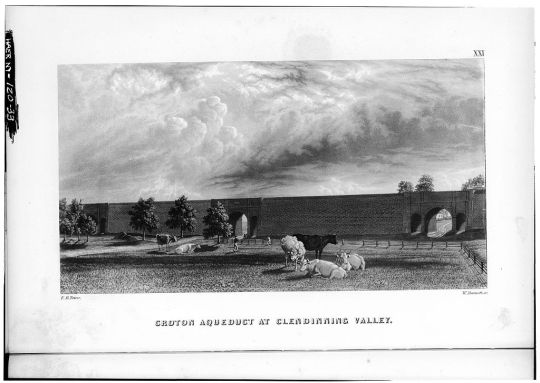
An engraving of the Old Croton Aqueduct running through Clendinning Valley, north of New York City.
(Historic American Engineering Record, Library of Congress)
Robert Kornfeld, Jr., a principal at the engineering firm Thornton Tomasetti and vice president of Friends of the Old Croton Aqueduct, a nonprofit preservation group, has spent years studying the historic waterworks. “It was unlike anything that had been built in the U.S. at that point,” he says.
The conduit itself was mostly a masonry tunnel, kept steady on its incline by running partially buried, traveling through hills and spanning across valleys. For its entry into Manhattan, the aqueduct crossed the Harlem River on an arched, Romanesque Revival stone bridge—all as Douglass had imagined.
The Harlem High Bridge stood 1,420 feet tall, supported by piles driven up to 45 feet into the riverbed. Eight arches spanned the river and another seven stretched over land. Croton water flowed through iron pipes hidden beneath a walkway.
But the High Bridge took a decade to build. Everything else was completed by 1842, including a temporary embankment across the Harlem River that allowed the aqueduct to begin operation.

A reservoir for the Old Croton Aqueduct in 1902.
(New-York Historical Society / Robert L. Bracklow Photograph Collection )
On June 27, 1842, Croton water reached Manhattan. Thousands of hydrants were placed on the streets in the next few years to provide free water for drinking and firefighting. The thankful city held a celebration in October 1842. Church bells rang, cannons fired at the Battery, and a parade marched up today’s Canyon of Heroes.
A Waterworks for the 20th and 21st Centuries
Innovation continued in the years after the Croton Aqueduct’s full completion in 1848. When cholera emerged again in 1849, the city responded by building its sewer system—enabling the creation of bathrooms with running Croton water.
The population skyrocketed. By the 1880s, the city exceeded one million, and suddenly the aqueduct could not meet demand. A new, much larger waterworks—the New Croton Aqueduct—opened in the 1890s and raised the water above the old Croton dam, which remains submerged to this day.

The High Bridge in New York City, 1900. The High Bridge—officially, the Aqueduct Bridge—rises almost 140 feet over the Harlem River, connecting the boroughs of the Bronx and Manhattan.
(Universal Images Group via Getty Images)
That same decade, one of the original reservoirs was demolished to make way for the New York Public Library’s Main Branch. In 1898, the Bronx, Staten Island, Queens, Brooklyn and Manhattan voted to unite as one City of New York. The union immediately brought the city’s population up to 3.3 million and prompted the construction of the Catskill and Delaware Aqueducts that are now world renowned for their quality. The New Croton Aqueduct now accounts for only about three percent of the city’s water.
In the 1930s, the Old Croton Aqueduct’s remaining reservoir was filled and buried under what is now Central Park’s Great Lawn. The old aqueduct began to gradually shut down in 1955. That same year, the Manhattan Company merged with another large financial institution to form Chase Bank.
Today, the New York State Office of Parks, Recreation and Historic Preservation oversees 26.2 miles of Old Croton Aqueduct State Historic Park, which runs from the Bronx to Cortlandt, New York. “A lot of the elements are still there,” Kornfeld says. “In addition to being a great civil engineering work, it’s a great work of landscape architecture, and that’s why it’s a great walking trail.”
Of the old aqueduct, only the High Bridge remains intact in city limits. In the 1920s, its river-spanning stone arches were replaced by one long steel archway, opening a path for large boats to pass underneath. It is the oldest bridge in the city, and the most tangible link to the waterworks that made New York City a populous, thriving metropolis.
#History
0 notes
Text
Suggestions From Specialists On A Healthy Yard
A great deal gardeners discover the pastime to be the two relaxing and therapeutic. Knowing the type of soil, equipment, and when you ought to plant the seeds are frequent gardening queries. You will discover helpful solutions to your gardening questions and some basic gardening guidance inside this report.
A great suggestion of what to plant in the garden is to plant substantial-benefit crops. Value is a subjective expression, but plant the factors that are most expensive to purchase, as extended as they are suited to the local weather. The total yard does not have to be devoted to this, but if an spot is earmarked for this type of crop, it can help save cash in the coming season when rates are sky high for specified crops.
Use perennials resistant to slugs and snails. Slugs and snails will quickly demolish your garden if you enable them. These pests gravitate to youthful perennials with smooth, tender, slim leaves. Some perennials usually are not that tasty to snails and slugs given that they have difficult and hairy leaves, and an unappetizing flavor. Good options in this group are plants this kind of as achillea, campanula, and euphorbia. Heuchera and helleborus also work properly.
Use each nicely-matured compost and mulch in your backyard garden. Compost will naturally aid crops expand more quickly, taller, and much healthier, and boost the generate of your vegetables. Mulch will help prevent the progress of weeds. Mulch also shades the floor close to the roots of your crops, defending them from warmth and conserving drinking water.
garden bridges Renton Steer clear of substances for pest handle. Chemical compounds are powerful but can also injury your vegetation. You must search for natural techniques instead. For occasion, you can acquire jars of ladybugs and launch them on your crops. Ladybugs are normal predators for a range of smaller insects that try to eat flowers and other plants.
Growing compost piles are a excellent substitute to buying traditional fertilizer. Compost piles are composed of natural material that little by little deteriorates producing a nutrient-prosperous soil. It presents both a great way of ridding your self of banana peels and other organic compounds, although supplying your crops with a nitrogen abundant combination that will encourage improved growth.
When it's autumn, you know what that means. It's time to plant slide greens! Fairly than putting standard clay vessels into use when planting crops of lettuce and kale, believe about utilizing pumpkins alternatively. Use some Wilt-Pruf to avert your pumpkin from decomposing and then you can place your plants proper within. Soon after you have finished this, you will be prepared to begin planting.
Plant self-seeding bouquets. Permit your flowers do the perform of re-stocking the backyard for you. If you enable your flowers to go to seed, the following 12 months you will have new seedlings popping up everywhere. If issues get too crowded, or if plants appear in the incorrect spot, basically skinny them out. Very good self-seeders are alyssum, bellflower, overlook-me-not, poppy and columbine.
Examination your soil ahead of purchasing fertilizer. Fertilizers supply crucial nutrients to crops, these kinds of as phosphorus, potassium and nitrogen. Nevertheless, fertilizers can be quite pricey. By tests your backyard garden soil to see which nutrition it is missing, you can steer clear of investing additional funds on a complex fertilizer, and as an alternative purchase a fertilizer made up of only the nutrients that your soil demands.
Make your very own kneeling pad. Working on the ground can be very difficult on your knees. A kneeling pad supplies considerably necessary cushioning, delivering comfort as properly as protecting your joints. If you do not have one on hand, just find a piece of foam or an previous pillow that is two to three inches in depth. Protect it with plastic wrap or area it in a plastic bag to safeguard it from filth and dampness and take pleasure in relaxed cushioning whilst you garden.
Increase sweet basil very easily. Basil is an yearly herb, and very delicate to chilly, so try expanding it in a pot in a sunny kitchen area window. Steady harvesting of the plant encourages progress so be positive to choose the prime leaves constantly. It can be developed in the garden, but beware of decrease night-time temperatures as this will trigger the entire plant to wilt or even die.
Maintain your seeds warm and humid. Most seeds are healthful at a temperature of about seventy levels. Place your pots next to a heating vent or install an extra heater if necessary. You can protect your pots with plastic films so that the seeds can hold their humidity and warmth.
To keep rodents, deer, and other pesky animals absent from your natural and organic backyard garden, use natural and organic repellents. A spray produced from scorching peppers can be powerful. Otherwise try a spray that contains urine or rotten eggs. No matter of what you use, apply the sprays liberally and reapply routinely particularly after a rain shower.
If you are new to organic and natural gardening and are fascinated in increasing vegetables, you need to be informed that certain crops are much simpler to start off with than other folks. For instance, broccoli, onions, and peppers are among the best. You need to also be conscious that various plants have different increasing timetables. These timetables are available on the internet. Right after choosing which crops you want to increase, look up their timetables so you know when to plant them.
If you stick to proper organic expanding circumstances you could find that you are better able to marketplace your make at the regional fruit stands and farmer's marketplaces. Natural create is really common now due to the fact individuals are starting to see all the wellness positive aspects of ingesting an organic and natural complete meals diet plan.
It can be tough to develop an organic and natural garden without chemical compounds, but the stop outcome is worth the work. Though the chemical compounds could assert better outcomes, using natural approaches to tame your garden will do less damage to your physique, and the atmosphere.
As was reviewed in the write-up, gardening can be very a rewarding activity, but important knowledge is required to have a tendency to your backyard effectively. A experienced gardener is most frequently a profitable gardener. If you adhere to the tips given in this report, you will quickly take pleasure in your personal beautiful backyard garden.
0 notes
Text
Handy Suggestions For Conquering Your Pesky Allergic reactions
If you happen to be an allergy sufferer, you know how bothersome allergic reactions can be. Allergic reactions can affect any individual of any age and these allergies lead to bothersome and irritating symptoms. Happily, there are now a amount of alternatives obtainable for coping with allergies. Keep reading to uncover out some things you ought to do to support you allergies and reduce indicators.
Apart from in severe conditions, dust mites are practically not possible to keep away from. Dust mites thrive in the bed room. leki na erekcje feed on useless skin cells identified mainly on pillows and mattresses. Disgusting! Create a hostile surroundings for mites by acquiring zippered hypoallergenic circumstances and covers for your pillows and mattress. Then, clean your bedding weekly in hot h2o, since very hot drinking water can eliminate dust mites.
If you participate in outside activities like tenting, jogging or group sporting activities, you may possibly require to clean your work out clothes or uniform much more regularly than usual-- after every single time you use it, if attainable. Some men and women who are especially sensitive may possibly even grow to be irritated by grass stains, sweat or filth on their apparel.
Prior to receiving a pet, you ought to investigation to understand which animals are much less likely to cause allergy difficulties. Each type of animal may possibly worsen allergy indicators, but for a longer time-haired ones are inclined to make things even worse. Additionally, do not have your pets sleep on your mattress if you want to keep your allergy symptoms below management.
Wash your bed sheets at least after a week. This will assist remove any allergy triggers that you may possibly arrive across, like pollen. You need to be positive to use scorching h2o when washing your sheets, so you can demolish any pollen that has collected. This will help you breathe less complicated at evening.
Verify the pollen levels for the region. During allergy season, these are usually broadcast on the local news for the day. Make sure you view the temperature so you know how poor your allergic reactions may be for the working day, or if you should pack some allergy medication with you for the working day.
Do you know that your body can really be the lead to of your allergic reaction? Ir truly might be the case. Everyday, as you shift all around your organization, allergy triggers, this kind of as dust and pollen, can get trapped inside of your hair and clothes. By bedtime, you have collected sufficient allergens to cause trouble respiratory correctly while you slumber. Have a shower and grab some new clothes just before you head off to bed each night.
Keep away from colorant in family products. You could be allergic. Even rest room paper may be handled with dyes if it characteristics a print or design and style. You need to change issues close to your home, like modifying to products that are white paper.
Olive trees have turn out to be common in a lot of western states. These trees, however, do have one drawback: they are veritable pollen factories. After you can recognize this troublesome tree, you could be capable to keep away from them and decrease exposure to their pollen. A lot of individuals reduce the pollen in their atmosphere by operating a hose on the dilemma tree for several minutes each and every day.
Get rid of acquiring allergy symptoms in your automobile by maintaining it clean and shut. When you use the A/C be positive your vents are all closed to stop allergens like pollen from moving into through them. Vacuum your inside upholstery frequently so that it stays free of charge of things that accumulate. This can actually contribute to getting rid of your allergy assaults.
The shabby-stylish seem is producing a comeback in property fashions. Its signature overstuffed sofas, chairs, and loveseats can wreak havoc on your allergic reactions. Reports have shown, that this kind of household furniture is usually loaded with a larger-than-average quantity of infamous allergens like goat hair, burlap, jute, and even cattle dander. Keep away from these ornamental pieces at all fees.
Remove houseplants from your house. Houseplants can be a breeding floor for mould that triggers allergies. If you need to have houseplants in your property, remove any leaves that have mold on them. You must also be certain that you avoid allowing drinking water sit in the tray soon after watering your vegetation.
You will not need to experience 12 months following year without any hope for a cure to allergy problems. There is a great deal you can do in get to reduce your allergy symptoms to get you sensation good once more. Use the advice from this report and you will before long dwell an allergy-free of charge existence.
0 notes
Text
Gallery: Inside Bangkok's HIDDEN HELL

Inside #Bangkok’s violent secret slums hidden away from tourists where tattooed locals live in drug ravaged hell
A BRIT photographer has uncovered Bangkok's seedy underbelly - where tattooed locals live in drug-ravaged slums.
Sam Gregg set out to find the real people of Bangkok's notorious Klong Toey slum before it gets razed by the government.

Sam Gregg chronicled life for the heavily-tattooed locals - Credit: Sam Gregg

A father poses with his new born child in the Klong Toey slum - Credit: Sam Gregg

Many locals have prison tattoos - Credit: Sam Gregg
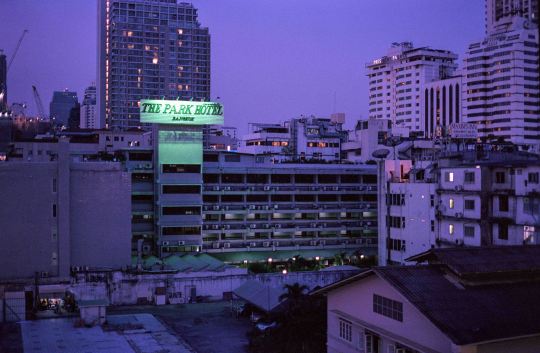
The slum is set to be demolished in 2022 - Credit: Sam Gregg

Yap is a former inmate of Bang Kwang - one of Thailand's most notorious prisons - Credit: Sam Gregg

He was given 20 years for dealing meth - Credit: Sam Gregg

He says his tattoos are a memento of his time behind bars - Credit: Sam Gregg
His gritty pictures show kids playing in filth and heavily tattooed ex-cons smoking under neon lights.
The pictures - shot largely in 2015 - also show sex workers posing in red-light districts and creepy abandoned buildings.
The Neon Dreams series focuses on how people from the poorer northeast of Thailand come to Bangkok allured by the bright neon lights of the city.
It was done to capture what will be lost when the area is gentrified in 2022.

The area is riddled with crime and violence - Credit: Sam Gregg

Sex workers pose in the world-famous slum - Credit: Sam Gregg

Gangsters run the area - Credit: Sam Gregg

The photos were largely shot in 2015 - Credit: Sam Gregg

Many locals are forced into sex work by the grinding poverty - Credit: Sam Gregg

Several of the residents come from the impoverished North East - Credit: Sam Gregg

Tattoos are done in seedy back alleys - Credit: Sam Gregg

Many of the local homeless sleep with knives - Credit: Sam Gregg

The area has been neglected for decades - Credit: Sam Gregg

Kids in the area don't have many prospects - Credit: Sam Gregg

Even the monks have their vices - Credit: Sam Gregg
–
You can follow BangkokJack on Instagram, Twitter & Reddit. Or join the free mailing list (top right)
Please help us continue to bring the REAL NEWS - PayPal
Read the full article
0 notes